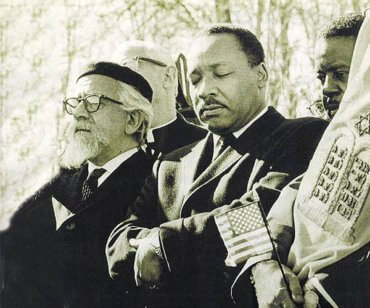What Is Hoshana Raba?
Dear JITC –
What is Hoshana Rabbah? Why are we beating willow branches?
Thanks,
Jason
Dear Jason-
Thanks for your question. The answer boils down to the Oral Law.
The Oral Law is an integral part of the Torah. It’s absolutely impossible to observe the Torah without it. For example, the Torah tells us that performing labor on Shabbos is a capital crime but it doesn’t define what labor is, which would be pretty useful information to have. The Torah also tells us to put on tefillin, which it calls “totafos,” but it doesn’t define them – and yet somehow we all agree on the black leather boxes containing certain Scriptural passages! My favorite proof of the Oral Law is from Deuteronomy 12:21, “…you shalt slaughter from your herd and your flock, which God has given you, in the manner I have commanded you….” The Torah explicitly says that God has taught us the laws of shechitah (ritual slaughter) but they appear nowhere in the text, ergo there must be an Oral Law!
The Oral Law features prominently in the holiday of Succos. For example, Leviticus 23:40 says to take pri eitz hadar, literally “the fruit of a nice tree.” So how do we know that this is an esrog and not a pear or an apricot? The Talmud (Succah 35a) cites several different authorities. One says that hadar is like ha-dir (the stable); just as a stable contains both large and small animals, the esrog can grow in a wide range of sizes. Another says that hadar is like ha-dar (the one who dwells); the esrog “dwells” on its tree in that it can remain there from year to year. A third sage says that the word hadar is etymologically related to the Greek word for water (hydro), and the esrog is a tree that requires a lot of irrigation.
Now here’s what most people get wrong. The Sages did not use wordplay to conclude that “the fruit of a nice tree” is an esrog. They knew that it was an esrog! What the Sages are doing (and what they are typically doing in cases where they employ such wordplay) is taking a fact known from the Oral Law – in this case the identity of the pri eitz hadar – and attaching it to the text with a mnemonic device.
There are other facts that are known from the Oral Law that have no such hooks to connect them to the text. These are called halachos l’Moshe miSinai – laws communicated to Moses at Sinai. They are just as much a part of the Torah as the 39 categories of Shabbos labor, the meaning of tefillin, ritual slaughter and the identity of an esrog. The aravos ceremony was communicated to us as a halacha l’Moshe miSinai.
In Temple times, there was a daily processional on Succos. The mishna (Succah 4:5) describes how the kohanim (priests) would lead the people in a circle around the altar reciting hoshia na (“please save”). On the seventh day of Succos – which we call Hoshana Rabbah – they would do so seven times. When the Temple was destroyed, the Anshei Knesses HaGedolah (Men of the Great Assembly) instituted that we should continue the practice with the bimah of our synagogues substituting for the altar.
The Midrash says that this ceremony, called Hoshanos, is a sign that we have emerged victorious from our judgment on Yom Kippur, mere days before. In the Temple, this ceremony was performed after offering the korban musaf – the special offering of the holiday. For this reason, most congregations perform Hoshanos as part of the Musaf service, which corresponds to that sacrifice. (Others perform it after Hallel, consolidating all parts of the service involving the four species into one big event.)
The seventh day of Succos is known as Hoshana Rabbah (“the great Hoshana”). While the name is of medieval origin, the day was unique even in Biblical times. The mishna (Succah 4:6) calls it “yom chibut chariyos” – “the day of beating the palm branches.” (The author of that statement was of the opinion that it was the lulav that should be beaten rather than the aravos but we do not follow his opinion.) Like the prayers recited throughout Succos, the bundle of aravos we beat is also referred to as “hoshanos.”
After we make the seven processionals with the lulav and return the Torah to the ark, the bundle of aravos is beaten on the ground. (Five aravos are optimum, though three is sufficient and, in a pinch, even one will do.) Anything that would invalidate aravos for use on the lulav would also invalidate them for this purpose but even if a majority of the leaves fall off, it is still valid. In fact, as long as one leaf remains on the stem, it is valid, though the mitzvah is best performed when the arava has many leaves. When we come to “Answer Your faithful ones” in Hoshanos, we put down the lulav and esrog and pick up the aravos. After Hoshanos, we wave the bundle, then beat it on the ground five times. (Technically, we are not beating the aravos, we are beating the floor with the aravos.) It is optimum for at least some of the leaves to fall off, though it’s okay if they don’t. (It’s also pretty unlikely that they won’t.) The beaten aravos are not thrown on the ground because this is considered disrespectful to the mitzvah. It is better to put them aside and later use them as fuel for baking the Passover matzah. In this way, the arovos, which have been used for one mitzvah, can be used again for another.
There are other rituals associated with Succos that are not explicit in the text. For example, there were water libations on the altar and a water-drawing ceremony that was so festive that the Mishna tells us that one who did not witness it never saw real rejoicing in his entire life. We call our Succos parties simchas beis hashoeva (the joy of the place of water-drawing) in memory of these Temple celebrations.
Hoshana Rabbah is an especially holy day, on which the judgments of Rosh Hashana and Yom Kippur are ratified. Even though Hoshana Rabbah is not a yom tov (Festival), we recite the extra Psalms of praise that are otherwise only recited on Shabbos and holidays. Beating the aravos is only a small portion of a day of great significance that tends to get overlooked among the many days of yom tov that fall in the month of Tishrei. If it weren’t surrounded (and overshadowed) by Rosh Hashana, Yom Kippur, Succos, Shemini Atzeres and Simchas Torah (all of which are yomim tovim), we would probably have a greater understanding of and appreciation for the gift of this very special occasion.
Sincerely,
Rabbi Jack Abramowitz
JITC Educational Correspondent
If you found this content meaningful and want to help further our mission through our Keter, Makom, and Tikun branches, please consider becoming a Change Maker today.







